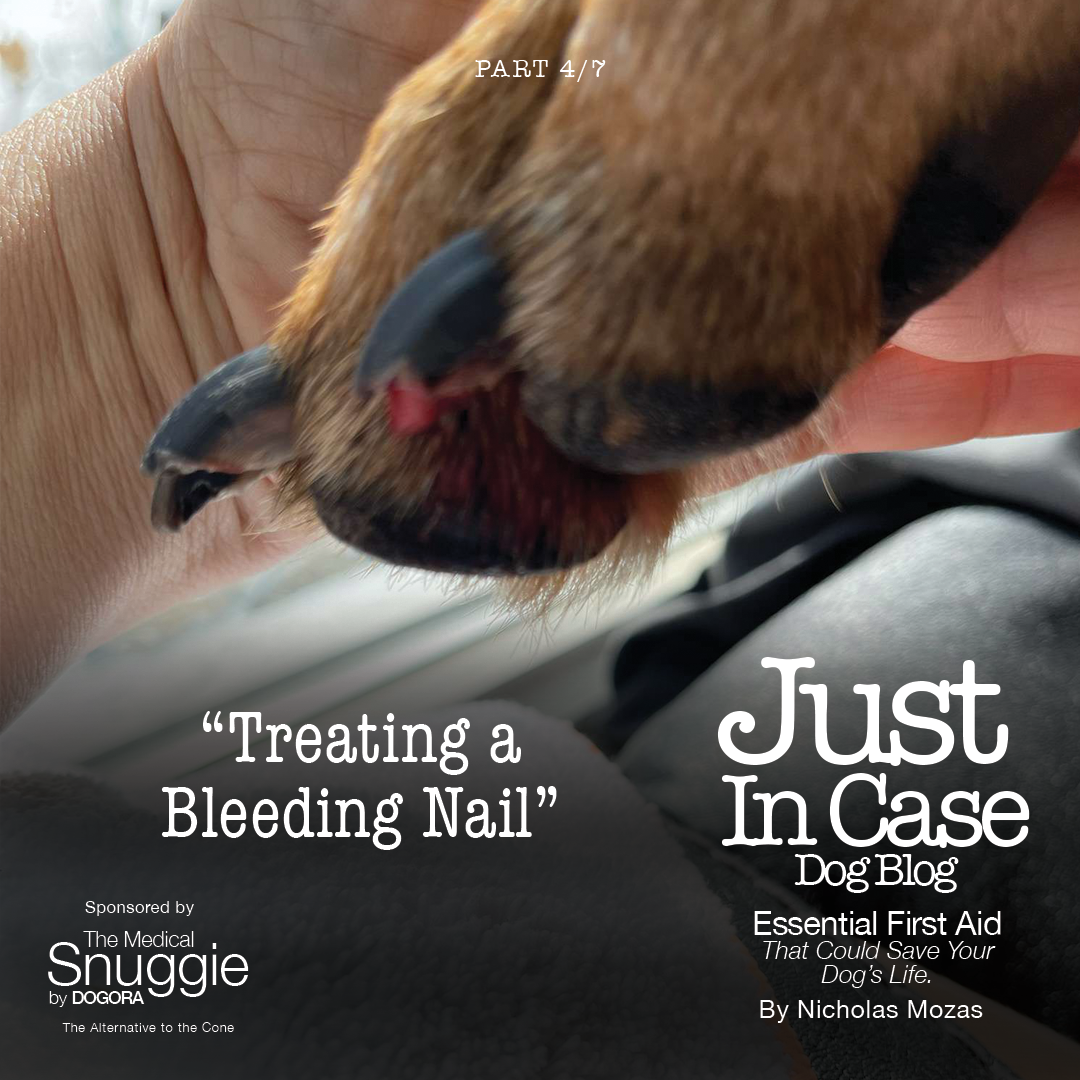Treating a Bleeding Nail & Ear Laceration

As an owner, loyal companion, and family member to our best friends, we are their first responders prior to reaching the emergency clinic or animal hospital. This is the fourth of a series of posts that will make you better prepared to handle many emergency situations that you might encounter with your dog.
Treating a Bleeding Nail
Playing ball on asphalt or cutting your dog’s nails too short can result in a painful yelp from your dog, along with a bleeding nail. Stay calm, talk in a soothing voice and give your dog a treat if possible. The bleeding looks much worse than it is. The quickest and most effective way to stop bleeding is with Styptic Powder. It works by contracting blood vessels, prevents bacteria from entering and contains a topical anesthetic to numb the nerve endings.
How to Use Styptic Powder
Apply powder directly to bleeding nail or with a cotton pad or swab. Keep moderate pressure on the nail for 30 seconds and repeat if needed.
Are there any home remedies?
Corn Starch, Flour, Baking Soda or Bar of Soap
Pour starch, flour, baking soda into your palm, gently dip nail in, continue to repeat until bleeding stops and gently compress nail with cloth for a few minutes.
When using a bar of soap, dampen until it becomes mushy and push/apply pressure on the dog’s nail directly into the bar for 3 to 5 minutes.
Ear Lacerations
Ears are very vascular, meaning there is a lot of blood supply going through them. This translates into lots of blood coming from a small cut or tear. Unfortunately, ears are notorious for slow healing and may need a lot of supervision to heal properly. One suggestion is to use a Medical Snood as your dog is recovering. Ask your vet if it’s right for your pet.
Steps on how to take care of an Ear Laceration prior to calling your vet
- Clean and disinfect the wound. You can use clean tap water to rinse the wound or make a saline solution at home with 1 teaspoon of salt dissolved in 2 cups of warm water. Be sure to not use any household soaps or shampoos.
- Apply gauze to the wound for several minutes or until bleeding begins to slow down.
- You are now going to bandage the wound. Once you notice the wound has begun to form platelets and coagulate, you can place a new piece of gauze and wrap your dog’s head with a bandage to prevent them from shaking their ears until you reach your Vet.
At Home Solutions
- You can use a sanitary pad to apply pressure to the wound and stop the bleeding if you do not have gauze.
- You can also use a clean towel, blanket, or T-shirt if you do not have bandages or tape. Cut these into strips and bandage ears flat against the head. If your dog has long ears, be sure to lift their ears up against the skull.
Next week, I’ll share how you can treat your choking dog and what to do if they have been exposed to dangerous toxins.
Nicholas Mozas is Founder and CEO of DOGORA. He is a graduate of the University of Guelph in Biological Science and holds an M.Sc. in Neutragenomics. Nicholas managed an Animal Hospital after graduation, gaining a better understanding of pets’ and owners’ needs. Find out more at www.dogora.ca.
Feel free to forward this blog post to your dog owner friends to enjoy!

